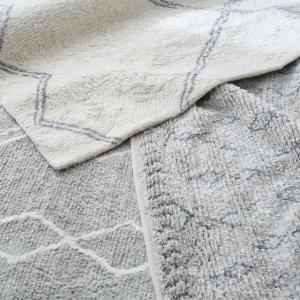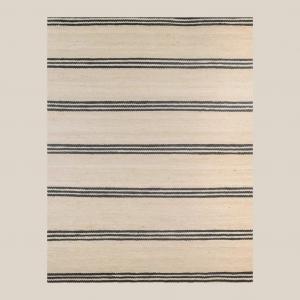The Enduring Elegance of Blue and White Rugs: Tradition Meets Modern Design in Dubai
Chic & Sustainable: Explore Handmade Blue and White Rugs for Stylish Interiors in Dubai
DUBAI, AL MANARA, UNITED ARAB EMIRATES, October 31, 2025 /EINPresswire.com/ -- In contemporary urban living, interior spaces are increasingly shaped not only by practical needs but also by considerations of aesthetics, comfort, and cultural expression. Among the elements that define the character of a room, rugs play a crucial role, serving as both functional and visual anchors within a space. In cities such as Dubai, where rapid urbanization intersects with a rich cultural history, rugs have evolved beyond their traditional utilitarian purpose to become integral components of interior design. The selection of a rug is influenced not only by material and texture but also by its color composition, pattern, and the techniques employed in its creation.One particularly enduring approach is the use of a blue and white color scheme, which continues to appear in a wide variety of interiors due to its versatility and psychological impact. The pairing of blue and white evokes both calm and clarity, combining the soothing qualities of blue with the fresh, expansive feeling associated with white. In interior design, this combination is often referred to as the blue and white palette, a term that emphasizes the deliberate selection and balance of shades to create a coherent visual language within a room.
Psychological and Visual Effects of Blue and White
Color is one of the most influential elements in shaping perception and mood within interior spaces. Blue is widely recognized for its calming and stabilizing effects. Studies in environmental psychology suggest that exposure to blue tones can reduce stress, slow the heart rate, and foster a sense of tranquility. White, in contrast, contributes to the perception of space and light, reflecting sunlight and enhancing the sense of openness. The combination of these colors within a blue and white palette provides a balance of serenity and brightness, offering an adaptable backdrop for furniture, decorative items, and architectural elements.
In regions such as Dubai, where natural light is abundant, the interplay of sunlight with blue and white surfaces can create dynamic visual effects throughout the day. Blue and white rugs placed in living areas or bedrooms interact with both artificial and natural light, creating subtle variations in tone that add depth to the room without overwhelming the senses. The choice of Blue and white rugs in such settings serves a dual purpose: it contributes to the spatial perception while simultaneously supporting the desired psychological atmosphere.
Functional Roles of Rugs in Modern Interiors
Beyond their visual contribution, rugs fulfill a variety of practical roles in contemporary living environments. Open floor plans, commonly seen in urban apartments and townhouses, often combine multiple functional areas such as living rooms, dining zones, and workspaces into a single spatial configuration. Rugs help define these zones, providing visual separation without the need for physical barriers. By creating subtle divisions, they facilitate the organization of space and contribute to a more coherent interior experience.
Additionally, rugs influence acoustics within a room. Soft textiles absorb sound, reducing echoes and enhancing auditory comfort. This function is particularly relevant in urban apartments with hard flooring surfaces such as marble, tile, or wood, where sound can easily become intrusive. A rug’s texture, thickness, and material composition all play a role in how effectively it dampens noise. In this context, Blue and white rugs can serve as practical solutions that improve the livability of a home while also contributing to its aesthetic framework.
Material Considerations and Tactile Experience
The materials used in rug production significantly impact both durability and sensory experience. Natural fibers such as wool, cotton, and jute offer distinctive tactile qualities, temperature regulation, and longevity. Wool is highly resilient, providing elasticity that prevents deformation under furniture weight and ensuring that the rug maintains its appearance over time. Cotton, often used in white rugs, delivers a flatter weave suitable for intricate geometric patterns and offers ease of maintenance, particularly in warm climates. Jute contributes a natural, textured surface that complements organic or rustic interior styles.
Rugs composed of blended fibers integrate the advantages of different materials. Combinations such as wool and cotton or jute and wool balance softness, durability, and visual texture. Within a blue and white color scheme, these material choices further enhance the depth and richness of the color presentation. The combination of natural fibers with carefully selected dyes, including both natural and synthetic options, ensures a palette that maintains vibrancy while resisting fading over time.
The Significance of Handmade Techniques
Handcrafted rugs carry a dimension that extends beyond material and design. In Dubai and other culturally diverse cities, traditional weaving techniques have been adapted to contemporary tastes, producing pieces that retain historical significance while responding to modern aesthetic preferences. The creation of a handmade rug involves a series of labor-intensive processes, including the preparation of fibers, dyeing, weaving, and finishing. Each step contributes to the final quality, texture, and longevity of the piece.
The artistry behind handmade rugs is particularly evident in the detail and precision of knotting techniques. Patterns, whether geometric, floral, or abstract, reflect both cultural heritage and the individual artisan’s interpretation. The use of a blue and white palette in handwoven rugs requires a nuanced understanding of color relationships, ensuring that the balance between contrasting tones produces visual harmony without appearing stark. Artisans often blend shades and incorporate subtle gradations to achieve a sense of movement and depth within the rug surface.
Sustainability and Ethical Production
Sustainability is increasingly influencing decisions related to home furnishings. Handmade rugs, particularly those produced with natural fibers and dyes, often represent environmentally responsible choices. Unlike mass-produced alternatives, the creation of handcrafted rugs typically requires minimal energy, avoids toxic chemical use, and generates limited waste. By selecting natural and renewable materials, the production process reduces environmental impact while preserving traditional craftsmanship.
Ethical considerations extend to the well-being of artisans. Fair compensation for skilled labor supports the livelihoods of local communities, ensuring that cultural practices continue to be valued and maintained. In Dubai, where global demand for luxury and design-oriented products intersects with traditional crafts, this approach aligns with broader trends toward transparency, ethical sourcing, and socially responsible consumption.
Design Integration: Placement and Patterning
The integration of Blue and white rugs into an interior depends not only on color but also on size, placement, and pattern. Rugs in living areas should be proportionate to furniture arrangements, often allowing all front legs of seating pieces to rest on the rug to create a unified visual grouping. Bedrooms benefit from rugs placed under or alongside beds, providing both comfort underfoot and visual cohesion.
Pattern choice is closely tied to the broader interior context. Geometric designs in blue and white complement modern minimalist interiors, while floral or organic motifs align with bohemian or Mediterranean-inspired aesthetics. Subtle texture, achieved through weaving techniques or fiber selection, enhances the tactile and visual experience without dominating the space. Layering rugs, combining a neutral base with a smaller blue and white accent rug, allows for flexibility and dynamic interplay between colors, patterns, and textures.
The Role of Blue and White in Psychological Comfort
The use of blue and white within a rug transcends visual appeal, contributing to psychological comfort in various interior zones. In bedrooms, for instance, blue tones are associated with improved restfulness, potentially supporting better sleep patterns and relaxation. White complements this effect by enhancing the perception of cleanliness and spaciousness, contributing to a sense of calm and order.
In communal living spaces, blue and white rugs can subtly influence social interactions. The balance of cool and neutral tones tends to foster a serene environment conducive to conversation, reading, or quiet reflection. The interplay of pattern and color provides visual interest while maintaining a consistent thematic framework that supports both relaxation and functionality.
Historical and Cultural Context
The use of blue and white in textile design has a long history across many cultures. From Middle Eastern and Asian motifs to European ceramics and tapestries, the combination has been associated with clarity, elegance, and sophistication. Incorporating such historical references into contemporary interiors through rugs allows for a dialogue between past and present, providing depth and cultural resonance to modern spaces.
In Dubai, where cultural diversity and global design influences converge, the historical significance of a blue and white color scheme finds practical expression in interiors that prioritize both aesthetics and livability. By integrating these elements thoughtfully, designers and homeowners create spaces that respect tradition while addressing contemporary functional needs.
Acoustic and Environmental Considerations
Rugs in urban apartments perform important environmental functions beyond aesthetics. They contribute to sound absorption, regulate indoor temperature through thermal insulation, and reduce dust circulation when maintained properly. The materials used in Blue and white rugs, particularly natural fibers, interact beneficially with indoor humidity levels and air quality, contributing to healthier living conditions.
Concluding Observations
In summary, the integration of a blue and white palette in interior design through the use of rugs represents a multidimensional approach to home furnishing. Blue and white rugs offer a combination of psychological comfort, practical functionality, material sustainability, and aesthetic flexibility. Handmade variations, crafted through traditional techniques adapted to modern preferences, emphasize cultural continuity and ethical production practices.
The consideration of size, placement, texture, and pattern ensures that the rug contributes meaningfully to the overall interior design while supporting the intended atmosphere, whether it be relaxation, social engagement, or visual coherence. The balance of color, the tactile experience of materials, and the historical resonance embedded within patterns all work together to transform a space from a mere functional area into a thoughtfully composed environment.
Through the deliberate choice of a blue and white color scheme, homeowners and designers create interiors that are not only visually appealing but also psychologically supportive, environmentally responsible, and culturally enriched. In a city like Dubai, where architectural innovation and cultural heritage coexist, the careful selection of rugs within this palette exemplifies how traditional artistry continues to influence and enhance contemporary living environments.
By emphasizing quality materials, ethical production, and mindful design, Blue and white rugs contribute to homes that prioritize long-term value, comfort, and sustainability. They represent a design approach where aesthetic considerations intersect with practical functionality and social responsibility, embodying a nuanced understanding of interior spaces as holistic environments rather than isolated decorative choices.
Carol Sukkar
Home and Soul Furniture Trading LLC
+971 56 112 1444
email us here
Visit us on social media:
LinkedIn
Instagram
Facebook
X
Legal Disclaimer:
EIN Presswire provides this news content "as is" without warranty of any kind. We do not accept any responsibility or liability for the accuracy, content, images, videos, licenses, completeness, legality, or reliability of the information contained in this article. If you have any complaints or copyright issues related to this article, kindly contact the author above.



